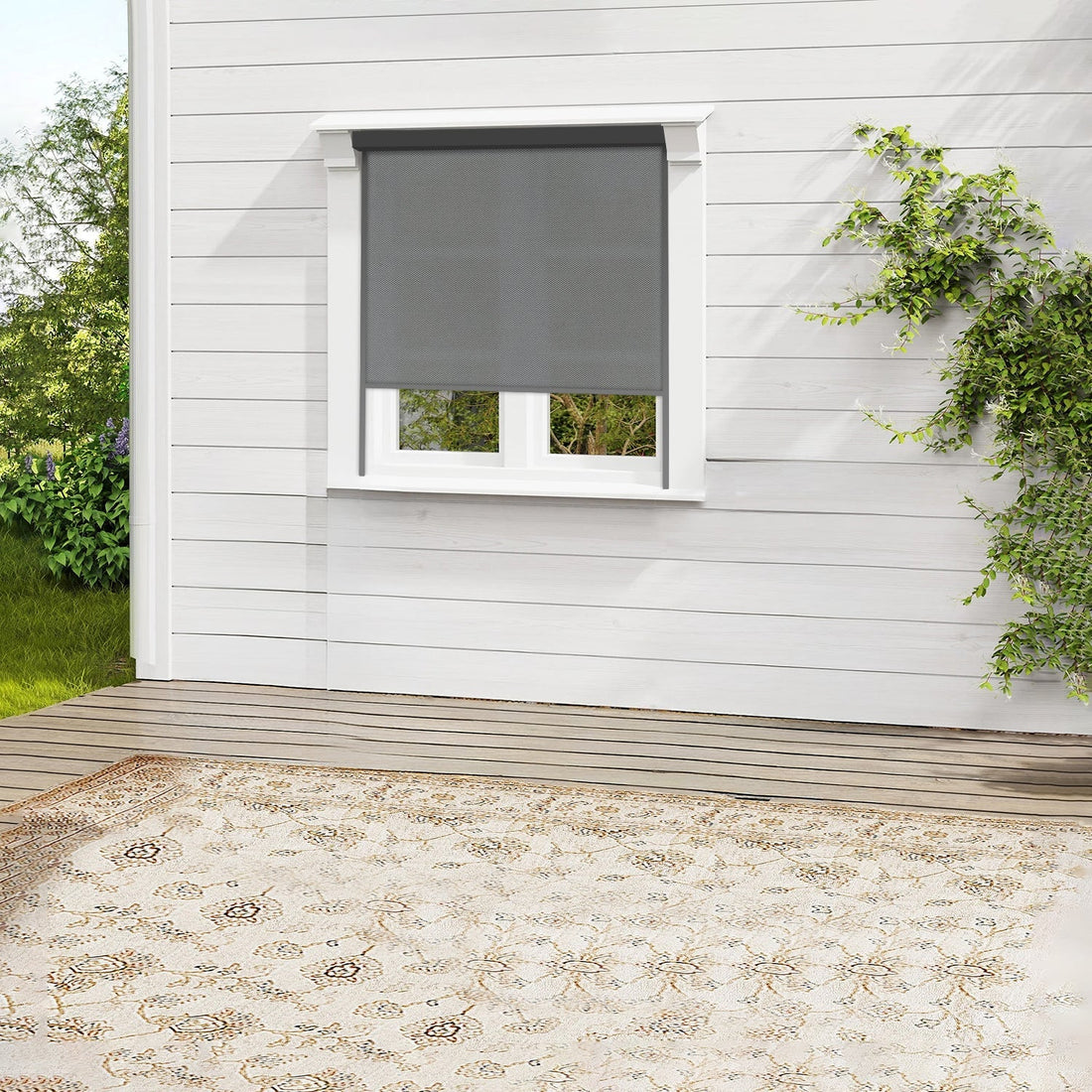
Large Windproof Screens – Your Ultimate Outdoor Wind Barrier Solution
Share
In many environments, strong winds can cause discomfort, reduce safety, and even damage property. Whether you’re protecting a patio, construction site, greenhouse, or large industrial yard, large windproof screens are the ideal solution to create safer, more comfortable, and wind-resistant spaces.
In this comprehensive guide, we will explore what large windproof screens are, their features, benefits, use cases, materials, installation tips, and why they are an essential investment for both residential and commercial outdoor protection.

What Are Large Windproof Screens?
Large windproof screens, also known as outdoor wind barriers or heavy-duty windbreak screens, are specially designed mesh or fabric panels used to reduce wind impact in open areas. These screens are typically installed on fences, scaffolding, railings, or custom frames, and can span large areas while remaining stable and effective.
Unlike small, decorative wind panels, large windproof screens are functional and engineered to withstand harsh weather. Their size and reinforced structure make them perfect for outdoor environments exposed to high winds, dust, sand, or even snow.

Core Features of Large Windproof Screens
When choosing the right wind barrier, durability and performance are key. Most high-quality large windproof screens share the following features:
High Wind Resistance
Designed to withstand wind speeds from 30–90 km/h, depending on the model and installation. Some industrial models can reduce wind force by up to 80%.
Durable Materials
Common materials include:
- HDPE (High-Density Polyethylene) – UV-stabilized, anti-aging, weatherproof.
- PVC-Coated Polyester Mesh – Strong tensile strength, waterproof, flame-retardant.
- Knitted Mesh Fabric – Lightweight, breathable, cost-effective for agriculture.
UV & Weather Resistance
Most large windproof screens are UV-treated to prevent fading and degradation from prolonged sun exposure, ensuring a lifespan of 3–8 years depending on conditions.
Custom Sizes and Colors
Available in standard rolls or custom dimensions up to 5 meters high and over 50 meters long. Optional colors: green, black, beige, gray, blue, etc. Branding or logo printing also available.
Easy to Install
Equipped with reinforced edges, grommets, eyelets, or buttonholes for hassle-free installation using zip ties, ropes, or hooks.

Key Benefits of Using Large Windproof Screens
1. Wind Control & Comfort
Reduce wind speed and turbulence in open spaces like patios, gardens, loading bays, and balconies, making outdoor areas usable year-round.
2. Improved Safety
Prevent flying debris, tools, and loose materials from being blown by the wind—especially on construction sites or industrial yards.
3. Crop and Livestock Protection
In farming and agriculture, large windbreak nets reduce plant stress, evaporation, and windburn while protecting livestock from chilling winds.
4. Dust and Debris Control
Reduce airborne particles in construction zones, mining areas, or road projects, improving site cleanliness and worker safety.
5. Versatility and Portability
Suitable for temporary or permanent use. Ideal for events, festivals, outdoor restaurants, and temporary fencing.

Popular Applications of Large Windproof Screens
Construction & Scaffolding
- Reduce wind load on scaffold structures.
- Improve worker safety at height.
- Prevent dust dispersion in urban zones.
Agriculture & Horticulture
- Wind protection for open fields, greenhouses, and orchards.
- Shade + wind functions for plant nurseries.
- Livestock area protection in farms.
Residential & Commercial Use
- Patio wind screens for homes near beaches or open plains.
- Balcony wind barriers for high-rise buildings.
- Outdoor cafes and restaurants to create cozy spaces.
Industrial & Logistics Facilities
- Protect storage yards and loading docks.
- Reduce noise and wind around large factories or hangars.
- Partitioning open spaces for climate control.
Types of Large Windproof Screens
| Type | Material | Ideal Use | Wind Reduction |
|---|---|---|---|
| HDPE Mesh | Polyethylene | Agriculture, patios | 50–70% |
| PVC-Coated Mesh | Polyester + PVC | Construction, industrial | 70–90% |
| Knitted Wind Net | Polyethylene | Farming, gardens | 40–60% |
| Solid Vinyl Panels | PVC | Permanent wind walls | 100% (no airflow) |
Installation Guidelines
Proper installation ensures durability and maximum wind resistance. Here are basic steps for setting up large windproof screens:
1. Prepare the Mounting Structure
Choose a sturdy base: metal fencing, wood frames, scaffolding, or steel poles.
2. Position the Screen
Unroll the screen and align it with the structure. For custom sizes, ensure precise measurements before ordering.
3. Secure with Fasteners
Use zip ties, bungee cords, or rope to attach the screen through the grommets or eyelets. Tighten evenly to avoid sagging.
4. Tension Adjustment
Use turnbuckles or tension wires for long spans to prevent billowing under wind pressure.
5. Regular Maintenance
Inspect periodically for tears, loosening, or UV wear. Replace damaged sections to maintain safety.
How to Choose the Right Windproof Screen
When selecting a large windproof screen, consider the following:
- Wind Speed in Your Area – Coastal areas require higher-grade materials.
- Required Wind Reduction Level – For comfort, 50% may be enough; for industrial sites, aim for 80–90%.
- Visibility Needs – Mesh screens maintain airflow and visibility; solid panels block both wind and view.
- Installation Environment – Temporary vs permanent, DIY vs professional install.
- Budget – HDPE is more affordable, PVC mesh offers better performance but higher cost.
Frequently Asked Questions (FAQ)
❓ Can I use windproof screens in snowy regions?
Yes, but make sure they are rated for cold weather and snow load. PVC mesh with reinforced stitching is ideal.
❓ Are they waterproof?
Most are water-resistant, especially PVC-coated models. However, they are primarily designed for wind, not as rain covers.
❓ How long do they last?
Lifespan depends on material and exposure. HDPE lasts 3–5 years, while high-quality PVC mesh can last up to 8 years.
❓ Can I order custom sizes or branding?
Absolutely. Most manufacturers offer custom sizes, colors, and logos for bulk orders or business use.


